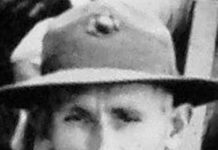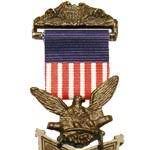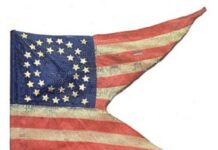National Medal of Honor Day. Saturday, March 25, wreaths will be laid at the Tomb of the Unknown Soldier for each of the men buried there.
On that same day, at Patriot’s Point in Mount Pleasant, SC, there will be Medal of Honor Storytelling tours and a special Medal of Honor Visitors Experience.
These two events, as others across the country, honor National Medal of Honor Day, celebrated each year on March 25 since it was first established by Congress to foster public appreciation and recognition of Medal of Honor recipients.
Each of the 3516 recipients of the nation’s highest military award is specially honored on the date that the first Medal of Honor was issued to 19 military men known as Andrew’s Raiders at the Civil War battle known as the Great Locomotive Chase in 1862.
The wreaths laid at the Tomb of the Unknown Soldiers are in remembrance that each of the Unknowns is a recipient of the Medal of Honor. The wreaths are laid by living recipients of the Medal of Honor in their recognition of the sacrifices of those we served alongside and those who came before them.
The Patriots Point Naval and Maritime Museum offers four exclusive tours that day featuring places and artifacts symbolizing America’s heroes, including a special behind-the-scenes experience and a commemorative item for all tour participants.
The story telling tours feature docents stationed at Medal of Honor Informational Checkpoints around the Museum to share the stories of America’s greatest military heroes next to the artifacts that illustrate their stories. This is the only day of the year where the two special events are conducted.
Jacob Parrott was the first service member to receive the Medal of Honor. He was a member of Andrew’s Raiders during the Civil War. Each of the Raiders received the Medal of Honor from Secretary of War Edwin Stanton on March 25, 1863, for” for their volunteering and participation during an American Civil War raid in April of 1862.
General Ormsby Mitchel was commanding officer of Union troops in Tennessee and planned to capture a water and railway junction necessary to the Confederates at Chattanooga, Tennessee, depriving the South access to the Ohio and Mississippi river valleys.
Such action, however, would be met with strong Confederate reinforcements from Georgia and create havoc and great loss of Union lives.
James J. Andrews was a civilian scout traveling with Mitchel and suggested using a small group of volunteers to destroy the railroad, thereby cutting off the Confederate ability to move either supplies or reinforcements. Mitchell approved, and Andrews Raiders conducted the Great Locomotive Chase. Andrews’ Raiders was instituted.
The Raiders plan included stealing a train, stopping several places along their rail ride to destroy tracks, bridges, switches, and telegraph lines behind them, then rejoining Mitchill as he headed to Chattanooga, and rejoin.
Traveling in groups of twos and threes and dressed as civilians to avoid suspicion, Andrews, another civilian William Hunter Campbell, and 22 volunteer soldiers, Parrott among them all arrived in Marietta, Georgia.
Moving to Big Shanty, the volunteers took over a steam locomotive, the General, along with three boxcars, and continued to Chattanooga, damaging the tracks and switches behind them along the way. Because of delays along the way due to Southern rail trains moving in the opposite direction, and other incidents that almost betrayed their secrecy , the Confederates were able to catch up with a train of their own, and begin chase with their own locomotive, the William R Smith.
Having a locomotive enabled Confederate General Fuller to keep pace until he was stopped by missing track, track that Andrews and his men had pulled out. Undaunted, Fuller and his men resumed the chase on foot until they were past the destroyed sections of track.
Just 18 miles outside of Chattanooga, the raiders abandoned the General and scattered. All were captured within two weeks, and in the end, Andrew’s raiders failed in their attempt. They were tried in military courts and found guilty of “acts of unlawful belligerency.” Andrews and seven others were hanged.
Fearing the same, Parrott and the remaining raiders managed to escape; he and five others failed, eight succeeded. Parrott was taken as a prisoner of war, and beaten numerous times in an effort to have him divulge more information about the raiders’ intention but refused each time. Eventually all the POWs were released in a prisoner exchange.
Parrott died Dec. 22, 1908 at his home in Kenton, Ohio and is buried in Grove Cemetery in Kenton, Ohio on the road named for him as Jacob Parrott Boulevard.
The hijacked locomotive, General, is on display at The Southern Museum in Kennesaw, Georgia. The Texas, the locomotive used by the Confederacy, in the chase, is on display.
Read about some New Jersey Recipients




